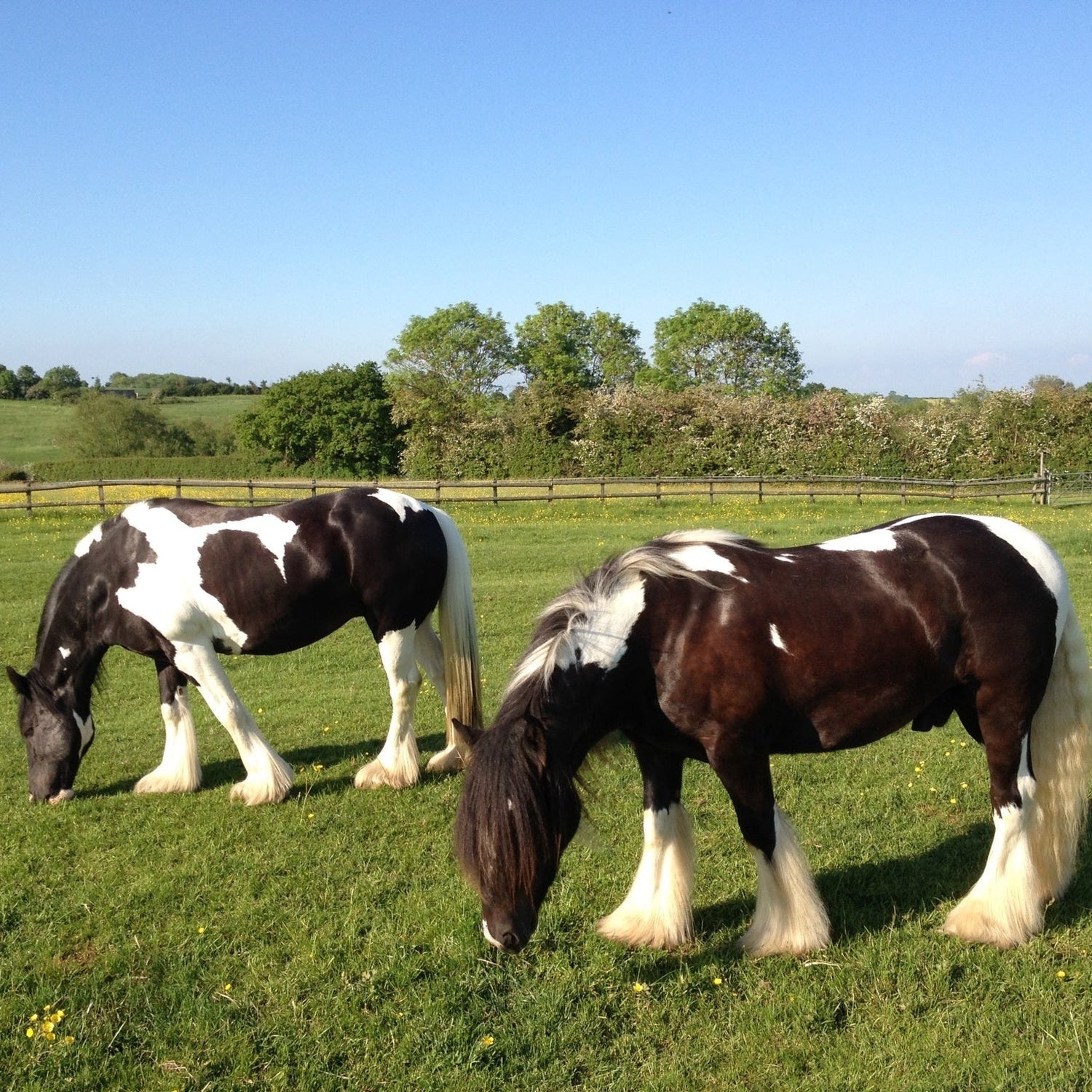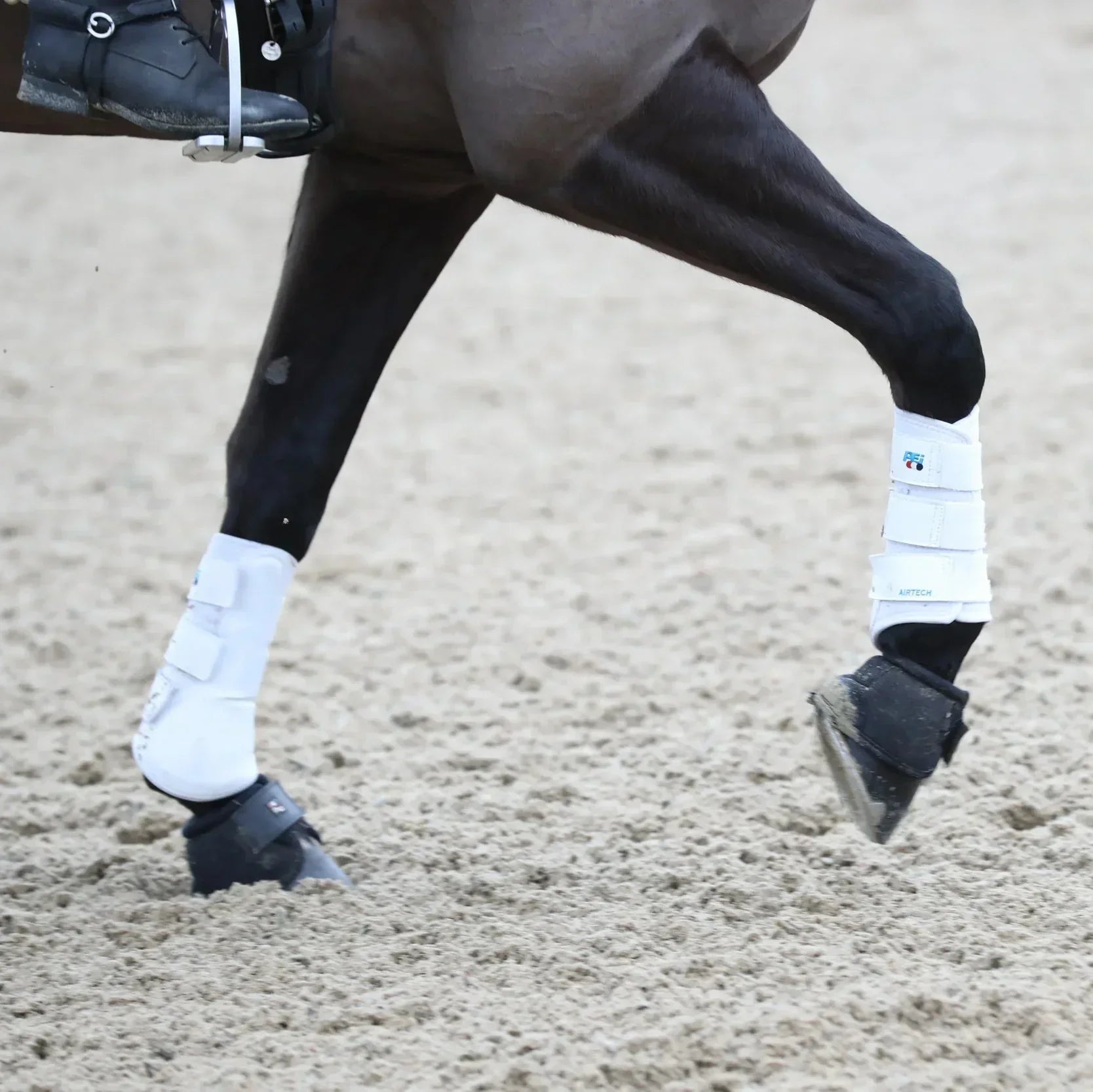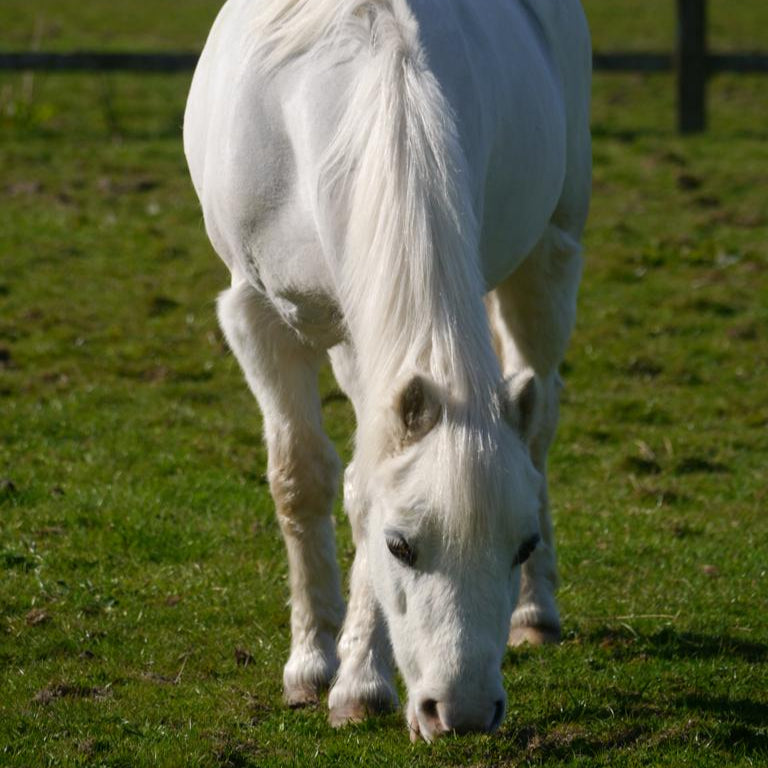Turnout regimes for natives, good do-ers, laminitics and EMS horses and ponies.
What are the best management steps to ensure your horse stays healthy, and happy, whilst out at grass?
Horses evolved roaming and grazing on vast natural plains, and so access to pasture is not only an important part of their diet, but should be considered a central pillar of good welfare. Time in the field allows them to simply be horses and ponies. Horses naturally graze for around 16 hours a day, which being turned out on suitable grazing allows them to do. Grazing also has physical and social advantages too, in terms of voluntary exercise and socialisation within a stable herd.
Is the grass always greener …?
However, before we all rush to turn our horses out in plenty of fresh natural grazing, we have to consider the risks too. Obesity is a big problem in equine welfare (no pun!), with studies frequently quoting over half of horses and ponies being overweight, and even around a third of horses and ponies, selected at random in the UK, actually hitting the ‘obese’ rating1. Carrying excess weight is associated with very many potential health issues, including risk of laminitis, metabolic conditions, joint stress, behaviour changes and poor performance, amongst others. This is very relevant when considering turnout and grazing regimes, as we know your horse’s pasture intake during periods of good grass growth will impact their calorie intake far more significantly than any other dietary element.
How can we allow them the turnout they need for good welfare, without compromising that same welfare by allowing excess weight gain?
Grazing management for your horse will be a balance for most. That may be a balance between best choice, and what is practically available where you keep your horse; or a balance between maximising turnout and controlling weight gain. However, by applying a little science we can offer practical solutions that are good for their mental welfare without compromising their physical welfare.
Recent research
For many of us we will need to use some way of restricting access to grass in order to limit intake. Previous research shows that equids, particularly ponies, can eat far in excess of their requirements if left to their own devices. In free grazing access ponies can eat almost 5% of their own bodyweight per day. When you consider their requirement is only 1.5 – 2% of bodyweight, you can see how easily weight gain occurs. Not only that, but if taken off the grass and only allowed a short turnout time, they can adapt their eating rate and bite size to compensate.
Did you know? Ponies can learn to eat nearly half of their daily requirement in just 3hrs grazing?!
Therefore, rather than taking them off the grazing completely, a regime that allows access whilst still restricting intake is the ideal approach.
Strip Grazing or Track System?
Strip Grazing
Divides a larger pasture into smaller sections of ‘strips of land, usually moving a fence line regularly to allow access to fresh grazing.
Track System
Aims to mimic natural grazing, usually with a perimeter track around one or several fields, often including different surfaces like sand, earth or gravel.
Both strip grazing and track system (aka ‘Paddock paradise’), can help reduce intake, whilst still allowing long-term pasture access – but which one is better? In some ways it will depend on your circumstances and what is practical. Certainly, strip grazing is easier to put in place, and can be a great option for many. Just remember to move that boundary regularly. Monitoring your horse’s body condition score will help determine by how much you move it each time.
Recent research, carried out at Redwings Horse Sanctuary (UK) has highlighted an interesting advantage to the track system. Researchers compared similar groups of ponies on the two regimes. Two key differences were highlighted in the results:
- Voluntary Exercise
- Those on the track system were found to voluntarily exercise (mainly in walk) for longer, and covered more distance, than those strip grazing. From earlier research we know strip grazing doesn’t restrict natural movement, so there is a clear indication that track system encourages a more natural grazing, where regular movement would be part of their day.
- For track systems which include a variety of surfaces, more movement is not only good for avoiding unwanted weight gain, but can also be beneficial for hoof health.
- Agonistic Behaviour
- An interesting observation was that ponies strip grazing typically showed more agonistic behaviour towards each other – i.e. they argued more. It is thought that although the trials were designed to give the ponies the same amount of room, the nature of strip grazing – moving one fence line regularly – instils a perception of a restricted area. However, this agonistic behaviour did settle down over time, suggesting that they may adapt better in the long-term.
The ponies were overweight at the start of the trial, and neither system resulted in significant weight loss. However, the trial was only run for four weeks and weight control in horses and ponies is a long-term commitment.
Key Takeaways
- Putting in the right grazing management can help you control intake, and therefore reduce unwanted weight gain in your horses, in a way that also benefits their welfare. Consider track system, if practical, to naturally mimic happy and content, natural grazing behaviour.
- Balance the Diet: Remember any restricted grazing diet, or grass only diet, will be micronutrient deficient. Supplement with a broad-spectrum supplement suitable for your horse and management. Contact Us if you would like advice on choosing a suitable product for you and your horses or ponies.
References
- Robin CA, Ireland JL, Wylie CE, Collins SN, Verheyen KL, Newton JR. Prevalence of and risk factors for equine obesity in Great Britain based on owner-reported body condition scores. Equine Vet J. 2015 Mar;47(2):196-201.
- Longland,A. C. and Barfoot,C. and Harris,P. A., Effects of grazing muzzles on intakes of dry matter and water-soluble carbohydrates by ponies grazing spring, summer, and autumn swards, as well as autumn swards of different heights. 2016, USA, 40, New York, Journal of Equine Veterinary Science, (26–33), Elsevier
- Kirton R, Sandford I, Raffan E, Hallsworth S, Burman OHP, Morgan R. The impact of restricted grazing systems on the behaviour and welfare of ponies. Equine Vet J. 2024 Sep 14.
Written by: Kate Hore, Head Nutritionist. RNutr (Animal), R.Anim.Technol (Cert), BSc(Hons). – Find out more about Kate and out Technical Team HERE.



